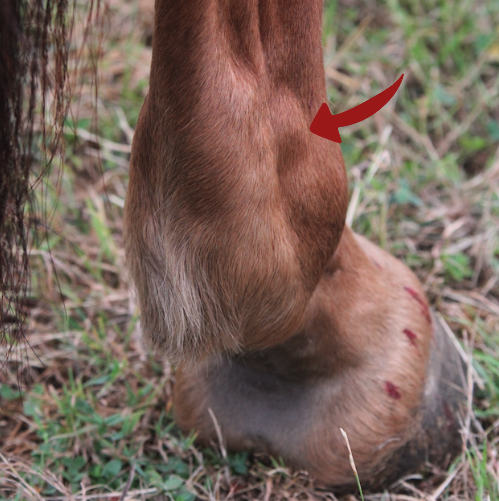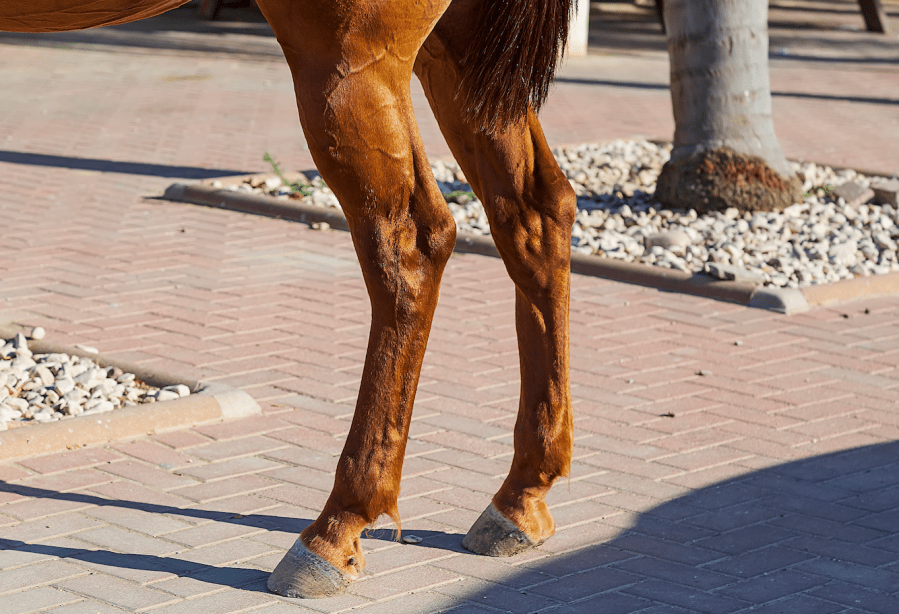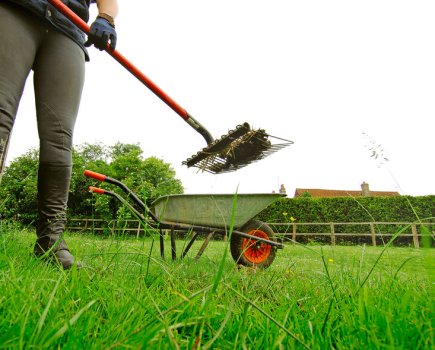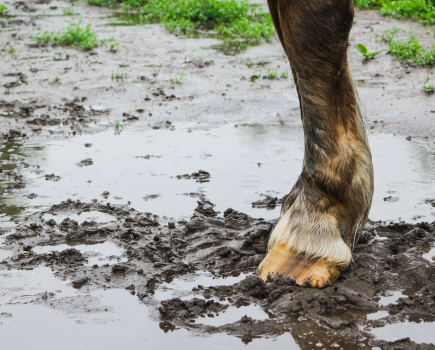A windgall is swelling of the digital tendon sheath on a horse’s leg — usually the hind leg and one or both may be affected at the same time — around the fetlock joint.
The digital tendon sheath is a sterile fluid-filled sleeve that covers the flexor tendons over the back of the horse’s fetlock joint.
Often these swellings appear with no associated lameness and are not painful to touch. In fact, windgalls without lameness are common and usually only a concern for cosmetic reasons. They’re likely to be the result of wear and tear rather than your horse having suffered a serious injury.
However, in some cases a windgall can be a sign of a more serious problem in your horse’s leg and may be associated with a moderate to severe lameness.
What causes a windgall?
Injury to the digital flexor tendon within the sheath will cause a more problematic windgall and lameness in horses, and this is known as inflammatory tenosynovitis.
A wound that pierces the tendon sheath can cause infection, which will also cause swelling. Septic tenosynovitis is associated with severe lameness and requires urgent veterinary attention.
Persistent swelling of the tendon sheath can also cause Annular Ligament Syndrome.
The annular ligament is situated between the tendon sheath and the skin over the back of the fetlock joint; its role is to hold the flexor tendons in place.
The annular ligament can hold back some swelling, which results in bulging of the sheath above and below this region, and gradual thickening of the ligament.
How to diagnose and treat a windgall
 Heat and pain at the site of the windgall can indicate that the horse is suffering a more serious problem. The area should be checked for wounds, as even the smallest puncture can result in sheath infection. Clip the hair from just above the fetlock to the heel bulb if necessary.
Heat and pain at the site of the windgall can indicate that the horse is suffering a more serious problem. The area should be checked for wounds, as even the smallest puncture can result in sheath infection. Clip the hair from just above the fetlock to the heel bulb if necessary.
Your vet may decide that an ultrasound examination is necessary for significant windgalls.
The fibre pattern of the flexor tendons can then be assessed together with any thickening of the annular ligament.
If it looks to be infected, a sample of the fluid within the tendon sheath can be taken for investigation.
When lameness is mild and there’s no evidence of infection or tendon or ligament damage, then rest, cold therapy and systemic anti-inflammatory drugs may be all that’s required.
However, for lameness that is more severe or persistent, anti-inflammatory medication can be administered directly into the sheath.
If there is tendon damage, your horse will need a longer rest period with repeated ultrasound scans to monitor progress.
Treatment of annular ligament thickening is initially directed at reducing sheath swelling, but may need operating on. If infection is present, surgery is needed. The tendon sheath is flushed with high volumes of sterile saline.
Preventing windgalls in horses
Most horses will develop some degree of tendon sheath swelling in their life, usually in the hindlegs.
Care should be taken to minimise the risk of tendon injury through avoidance of riding on bad ground and sensibly managed exercise regimes.
Leg boots can be used to protect the tendon sheath area during exercise or turnout and when travelling in a horsebox, which may help to lower the risk.
Your Horse editor Aimi Clark’s first horse, a Warmblood called Marcus, used to get windgalls.
They were most noticeable in the summer, when Marcus was competing regularly and so his legs were working hard.
Sometimes they would appear in winter too after a day’s hunting. Luckily the windgalls were not painful to touch and Marcus was never lame. Aimi found that they went away with exercise.
Images: copyright Shutterstock
Related content
- Swollen legs in horses: why it happens, possible causes and how to manage it
- Ultimate guide to horse boots: different types, key features and correct fit
- Cellulitis in horses: what you need to know about this sinister cause of a swollen leg
- Tetanus in horses: the signs, treatment and prevention advice









